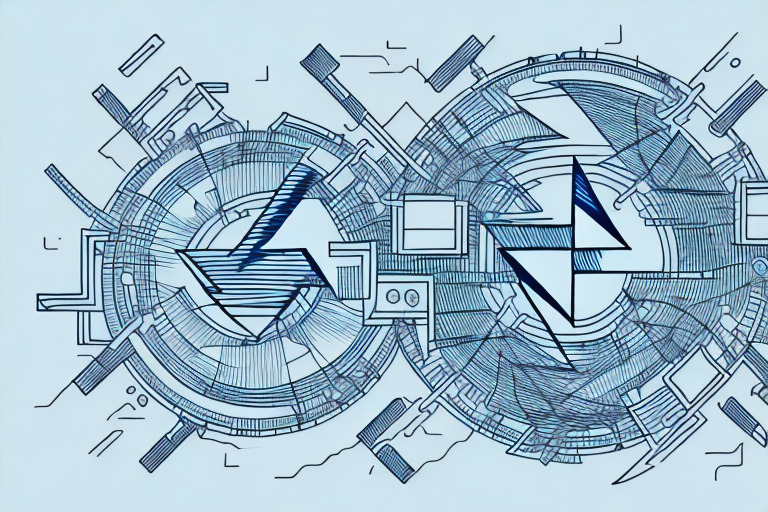
Elevating Enterprise Architecture: Beyond Rules Enforcers to Innovation Catalysts
Enterprise architects have traditionally been viewed as rule enforcers whose primary role is to ensure that technology systems align with business processes and standards. While this is essential, it is not enough in today’s rapidly changing business landscape. To stay relevant, enterprise architects must also serve as innovation catalysts, driving growth and competitive advantage through technology-driven innovation. This article will explore the shifting role of enterprise architects and strategies for fostering innovation in enterprise architecture.
Understanding the Traditional Role of Enterprise Architects
Enterprise architects are critical in ensuring technology systems align with established standards and guidelines. This function involves developing and enforcing policies, procedures, and best practices to create a harmonized IT landscape that supports business objectives. However, their role extends beyond just enforcing rules.
Enterprise architects must also ensure that the technology systems are designed to meet the current and future needs of the business. They must understand the business strategy and work collaboratively with stakeholders to align technology solutions with business objectives. This requires a deep understanding of both the business and technology landscapes.
Rules enforcement in enterprise architecture
Rules enforcement involves establishing and governing standard technology stacks, architecture frameworks, data models, and other technology-related decisions. This approach helps to prevent silos, fragmentation, and duplication of technology resources while promoting consistency and scalability in technology systems. However, it is essential to note that rules should not be followed blindly. Enterprise architects must be able to assess the impact of new technologies and determine whether they align with established standards.
Balancing Standardization and Innovation
While standardization is essential, it can also hinder innovation and agility. This is where enterprise architects must strike a balance between standardization and innovation. They must support growth and change by adopting new technologies, processes, and methodologies to enable transformational innovation while ensuring that these innovations align with enterprise standards.
Enterprise architects must also be able to identify and manage risks associated with technology solutions. In addition, they must have a deep understanding of the security and compliance requirements of the organization and ensure that technology solutions meet these requirements.
In addition to their technical expertise, enterprise architects must possess strong communication and leadership skills. They must be able to effectively communicate complex technical concepts to business stakeholders and influence decision-making at all levels of the organization.
Enterprise architects are critical in ensuring that technology systems align with business objectives. Their role extends beyond just enforcing rules and involves balancing standardization and innovation, managing risks, and effectively communicating with business stakeholders.
The Shift to Innovation Catalysts
In today’s rapidly changing business landscape, it is no longer enough for enterprise architects to maintain and optimize existing systems. They must also be catalysts for innovation, driving change and identifying opportunities for positive disruption through technology-driven innovation.
But what does it mean to be an innovation catalyst?
Embracing a Growth Mindset in Enterprise Architecture
At the heart of being an innovation catalyst is a growth mindset. This means viewing failure as a learning opportunity and recognizing that challenges are growth opportunities. Enterprise architects who adopt a growth mindset can embrace innovation and experimentation while balancing risk and reward.
By cultivating a growth mindset, enterprise architects can foster a culture of innovation within their organizations. They can encourage their teams to take risks and try new things, knowing that they will learn and grow from the experience even if they fail.
Encouraging Collaboration and Cross-Functional Teams
Another critical element of being an innovation catalyst is fostering collaboration across functions and departments. Enterprise architects must work to break down silos and cultivate cross-functional teams with diverse skill sets and expertise.
By bringing together individuals from different areas of the organization, enterprise architects can generate new ideas and approaches that might not have been possible otherwise. In addition, they can leverage their teams’ collective knowledge and experience to drive innovation and create new solutions to complex problems.
Furthermore, cross-functional teams can help to ensure that new initiatives are aligned with the overall goals and objectives of the organization. By involving stakeholders from different business areas in the innovation process, enterprise architects can help ensure that everyone is working towards the same end goal.
In conclusion, the shift to innovation catalysts is essential for enterprise architects looking to stay competitive in today’s fast-paced business environment. By embracing a growth mindset and fostering collaboration and cross-functional teams, enterprise architects can drive change and identify opportunities for positive disruption through technology-driven innovation.
Strategies for Fostering Innovation in Enterprise Architecture
Enterprise architecture constantly evolves, and staying ahead of the curve requires a commitment to innovation. There are several strategies that enterprise architects can adopt to drive innovation and support growth.
Adopting agile methodologies
Agile methodologies, such as scrum and lean, enable enterprise architects to respond quickly to changing business needs and drive innovation. These methodologies prioritize flexibility, iteration, and collaboration and are designed to support rapid experimentation and prototyping. By adopting agile methods, enterprise architects can create a culture of innovation that encourages experimentation and supports risk-taking.
For example, an enterprise architect in the financial services industry might use agile methodologies to develop new customer-facing applications. Using an iterative approach, the architect can quickly test and refine new features based on customer feedback. This approach can help the organization stay ahead of the competition by delivering new products and services faster and more efficiently.
Implementing continuous improvement processes
Continuous improvement processes involve soliciting and acting on feedback to continually improve systems, processes, and outcomes. Enterprise architects can use this approach to identify areas for improvement, drive innovation, and support growth. By regularly soliciting feedback from stakeholders and users, enterprise architects can identify pain points and areas for improvement.
For example, an enterprise architect in the healthcare industry might use continuous improvement processes to improve patient outcomes. By regularly soliciting feedback from doctors, nurses, and patients, the architect can identify areas for improvement in the electronic health record system. This approach can help the organization improve patient outcomes, reduce costs, and stay ahead of regulatory changes.
Leveraging emerging technologies
Another strategy is to leverage emerging technologies such as artificial intelligence, machine learning, and blockchain to drive innovation and support growth. These technologies can enable new business models, improve efficiency, and create new revenue streams. By staying up-to-date with emerging technologies, enterprise architects can identify opportunities to drive innovation and create value for the organization.
For example, an enterprise architect in the retail industry might use machine learning to analyze customer data and identify new opportunities for cross-selling and upselling. Using machine learning algorithms to analyze customer behavior, the architect can identify patterns and trends that inform marketing and sales strategies. This approach can help the organization increase revenue and improve customer satisfaction.
In conclusion, there are several strategies that enterprise architects can adopt to drive innovation and support growth. By adopting agile methodologies, implementing continuous improvement processes, and leveraging emerging technologies, enterprise architects can create a culture of innovation that supports the organization’s goals and objectives.
Case Studies: Successful Innovation-Driven Enterprise Architecture
Several companies have successfully adopted innovation-driven enterprise architecture and achieved positive results.
Company A: Transforming the IT Landscape
Company A adopted an innovation-driven enterprise architecture approach to transform its IT landscape and accelerate growth. They implemented agile methodologies, built cross-functional teams, and leveraged emerging technologies such as Artificial intelligence and machine learning to drive innovation. As a result, they were able to reduce IT costs, improve efficiency, and create new revenue streams.
Company B: Streamlining operations through innovation
Company B used innovation-driven enterprise architecture to streamline its operations and improve efficiency. They implemented continuous improvement processes, encouraged collaboration and experimentation, and embraced emerging technologies such as blockchain. This approach enabled them to create new business models, improve customer satisfaction, and achieve significant cost savings.
Overcoming Challenges in the Transition to Innovation Catalysts
While the benefits of adopting an innovation-driven enterprise architecture approach are clear, there are also challenges in transitioning from a rules enforcement to an innovation catalyst role.
Addressing resistance to change
Resistance to change is one of enterprise architects’ most significant challenges when transitioning to innovation catalysts. To overcome this challenge, they need to engage stakeholders, communicate the benefits of innovation, and create a culture of innovation.
Ensuring effective communication and alignment
Effective communication and alignment are also essential for success. Enterprise architects must understand business needs, communicate effectively with stakeholders, and ensure technology initiatives align with organizational objectives.
Navigating the balance between innovation and risk
Finally, enterprise architects must guide the balance between innovation and risk. They need to identify opportunities for innovation while prioritizing risk management and maintaining compliance with regulatory requirements.
Enterprise architects are critical in creating a harmonized IT landscape that supports business objectives. They must also serve as innovation catalysts to remain relevant, driving growth and competitive advantage through technology-driven innovation. By embracing a growth mindset, adopting agile methodologies, and leveraging emerging technologies, enterprise architects can support growth, drive innovation, and achieve significant business results.



